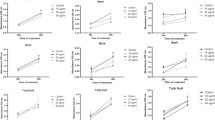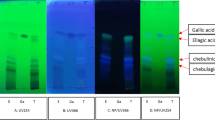Abstract
The main component that contributes to the high value of pineapple is bromelain which is a proteolytic enzyme and has been scientifically identified as a therapeutic agent. This study was conducted to obtain high quantity of bromelain from pineapple and to investigate the anticarcinogenic activity of fresh pineapple juices against A2780 ovarian and HT29 colon cancer cell lines. It was found that homogenization, ultrafiltration, precipitation and dialysis contributed to heavy loss of bromelain. Therefore, fresh pineapple juices from the flesh (PJ-F), core (PJ-C) and stem (PJ-S) were selected as a source of crude bromelain. Various bromelain concentrations of PJ-F, PJ-C and PJ-S (1 μg/ml, 10 μg/ml, 100 μg/ml and 1000 μg/ml) were exposed to the cancer cells and the cell viability was determined using Methylthiazol Tetrazolium Assay (MTT assay) after 24, 48 and 72 h. Besides, IC50 values were measured. Using normal cell (HSF1184) comparison, it was found that a 100 μg/ml concentration of bromelain would efficiently inhibit the cancer cells without affecting the surrounding normal cells. Microscopic examinations were carried out to elucidate the modes of cell death on the basis of morphological alterations using florescent and inverted phase contrast microscopes. Furthermore, the colony forming abilities of fresh pineapple juices on A2780 and HT29 cells were examined. The results demonstrated that PJ-F, PJ-C and PJ-S effectively suppressed the colony formation in cancer cells. The findings suggest that PJ-F, PJ-C and PJ-S may have the potential to induce anticarcinogenic effects through an apoptosis to A2780 and HT29 cells in vitro.












Similar content being viewed by others
References
Bala M, Ismail NA, Mel M, Jami MS, Salleh HM, Amid A (2012) Bromelain production: current trends and perspective. Arch Des Sci 65(11):369–399
Bhui K, Prasad S, George J, Shukla Y (2009) Bromelain inhibits COX-2 expression by blocking the activation of MAPK regulated NF-kappa B against skin tumor-initiation triggering mitochondrial death pathway. Cancer Lett 282(2):167–176
Castell JV, Friedrich G, Kuhn CS, Poppe GE (1997) Intestinal absorption of undegraded proteins in men: presence of bromelain in plasma after oral intake. Am J Physiol 273:139–146
Chobotova K, Vernallis AB, Abdul Majid FA (2010) Bromelain’s activity and potential as an anti-cancer agent: current evidence and perspectives. Cancer Lett 290(2):148–156
Doko MB, Bassani V, Casadebaig J, Cavailles L, Jacob M (1991) Preparation of proteolytic enzyme extracts from Ananas comosus L Merryl fruit juice using semipermeable membrane, ammonium sulfate extraction, centrifugation and freeze-drying processes. Int J Pharm 76(3):199–206
Fisher DE (1994) Apoptosis in cancer therapy: crossing the threshold. Cell 78(4):539–542
Franken NA, Rodermond HM, Stap J, Haveman J, Van Bree C (2006) Clonogenic assay of cells in vitro. Nat Protoc 1(5):2315–2319
Hale LP, Greer PK, Trinh CT, James CL (2005) Proteinase activity and stability of natural bromelain preparations. Int Immunopharmacol 5(4):783–793
Hickman JA (1992) Apoptosis induced by anticancer drugs. Cancer Metastasis Rev 11(2):121–139
Johnstone RW, Ruefli AA, Lowe SW (2002) Apoptosis: a link between cancer genetics and chemotherapy. Cell 108(2):153–164
Kalra N, Bhui K, Roy P, Srivastava S, George J, Prasad S, Shukla Y (2008) Regulation of p53, nuclear factor κB and cyclooxygenase-2 expression by bromelain through targeting mitogen-activated protein kinase pathway in mouse skin. Toxicol Appl Pharmacol 226(1):30–37
Kaufmann SH, Earnshaw WC (2000) Induction of apoptosis by cancer chemotherapy. Exp Cell Res 256(1):42–49
Kelly GS (1996) Bromelain: a literature review and discussion of its therapeutic uses. Altern Med Rev 1(4):120–123
Mashudin M, Abdul Majid FA (2009) Report on Nutritional Value of Commercial Pineapple Varieties in Malaysia. Project collaboration between Malaysia Pineapple Industry Board (MPIB) with Universiti Teknologi Malaysia
Maurer HR (2001) Bromelain: biochemistry, pharmacology and medicinal use. Cell Mol Life Sci 58:1234–1245
Pillai K, Akhter J, Chua TC, Morris DL (2013) Anticancer property of bromelain with therapeutic potential in malignant peritoneal mesothelioma. Cancer Invest 31(4):241–250
Salti GI, Grewal S, Mehta RR, Das Gupta TK, Boddie AW Jr, Constantinou AI (2000) Genistein induces apoptosis and topoisomerase II-mediated DNA breakage in colon cancer cells. Eur J Cancer 36(6):796–802
Sankaran K, Vadanasundari V, Hemavathy RV, Thirunavukkarasu A (2011) A comparative study on determining of efficacy of salt precipitation and biphasic system in the extraction of bromelain from Ananas comosus. Asian J Sci Technol 2(1):016–022
Tochi BN, Wang Z, Xu SY, Zhang W (2008) Therapeutic application of pineapple protease (bromelain): a review. Pak J Nutr 7(4):513–520
Umesh Hebbar H, Sumana B, Raghavarao K (2008) Use of reverse micellar systems for the extraction and purification of bromelain from pineapple wastes. Bioresour Technol 99(11):4896–4902
Acknowledgments
We are sincerely grateful to Prof. Madya Dr. Fadzilah Adibah binti Abd Majid for her excellent assistance in entire research procedure. This research was supported by Biotechnology Research Alliance, Institute of Bioproduct Development (IBD), Universiti Teknologi Malaysia, UTM 81310, Johor Bahru, Johor, Malaysia.
Conflict of interest
All the authors declare that there is no conflict of interest.
Human and Animal Rights and Informed Consent
This article does not contain any studies with human or animal subjects performed by any of the authors.
Author information
Authors and Affiliations
Corresponding author
Rights and permissions
About this article
Cite this article
Gani, M.B.A., Nasiri, R., Hamzehalipour Almaki, J. et al. In Vitro Antiproliferative Activity of Fresh Pineapple Juices on Ovarian and Colon Cancer Cell Lines. Int J Pept Res Ther 21, 353–364 (2015). https://doi.org/10.1007/s10989-015-9462-z
Accepted:
Published:
Issue Date:
DOI: https://doi.org/10.1007/s10989-015-9462-z




